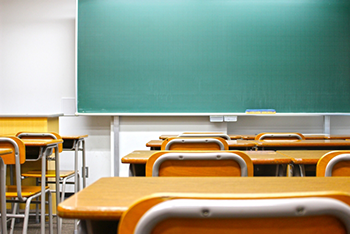
Under Japan's compulsory education system, when a child reaches six years, they can enter elementary schools which take six years from the beginning of the first year (April 1). After completing the studies in an elementary school, the students are required to enroll in junior high school until the first March 31 after the date when they reach 15 years of age.
This nine-year compulsory education program is not imposed on children of foreign nationality. However, if you wish to enroll in a public compulsory education school, you can enroll at no cost as Japanese students do. Japanese government and the Education Committees of local government also encourage foreign children to enter public schools to ensure that they do not miss school opportunities for non-Japanese children aged 6-15.
For example, some municipalities, such as Tsukuba City, have established Japanese language education classes specifically for foreign children and have assigned teachers who are qualified as Japanese language instructors. However, such support has not yet been achieved nationwide. Medium of education at both elementary and junior high schools, including not only classes but also admission procedures and communication with schools, are in Japanese language only. For non-Japanese children, entry into lower grades is permitted, particularly due to lack of communication skills in Japanese and differences in learning content and curriculum with their home country.
In principle, schools are operated on five-days-a-week system. In public elementary schools the time frame per class is 45 minutes. Generally, 4 classes are taken in the morning and 1 or 2 classes are taken in the afternoon. The number of classes varies by academic year. Generally, about 5 classes are taken for first to third grades, and about 6 classes for fourth to sixth grades. In both elementary and junior high schools, many public schools have a meal-service system and hence students don't need to bring their lunch from home. Average meal expenses per month for elementary schools and junior high schools are around ¥4,500 and ¥5,000, respectively.
Schools in Japan have a variety of events. Regular events to promote interaction and cohesion among students, such as school open day, athletic events, cultural festivals, learning presentations, school trips, and workplace experiences, as well as extra-school classes aimed at regional exchanges, are available. Parents and guardians can watch or participate in many of these events. After entering the junior high school, extracurricular activities known as "Bukatsudo (club activities)" are very popular among students, and many students belong to a specific club activity. Club activities are not mandatory, but depending on the clubs, practice session may last until late at evening and they may be required to practice and participate in the match on weekends.
Japanese schools also have their own school regulations. From the Japanese perspective, there are detailed rules, such as commuting to school, uniforms and caps to wear, design of shoes and bags, or hairstyles to be followed etc. Even from the Japanese point of view, there are detailed rules that are considered "strict" and penalties are imposed if not followed.





